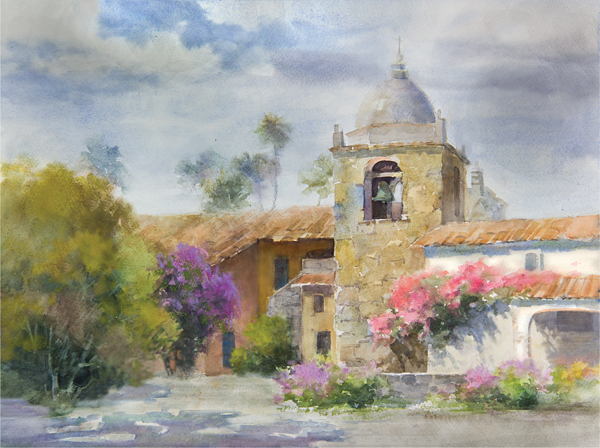

Carmel Mission
Watercolor on Fabriano cold-pressed watercolor paper, 12" × 16" (30cm × 41cm)
Every time a new student asks me how I know when a painting is finished, my answer is, “It is never finished. You just stop working on it in time.” A painting is not ready to be framed until you have taken out everything that a viewer who has not seen your reference photo will not miss. Remember, you are taking a large scene from the real world and scaling it down to mere inches. Instead of the eye moving between objects that are several yards apart, those details in a painting are much closer together. Unless the painting is quite large, too much detail can cause it to feel cluttered and unpleasing to the eye.
There will come a point in time that you mature past the concern of how to depict things and will be more interested in why a certain shape should be present. Does it serve a compositional purpose? If you can justify its presence from a design aspect, include it. If the answer is simply because it’s in your reference, there may be no justification for it. For the sake of simplifying, you may want to exclude it.
Just like with poetry, a simplified painting will stimulate the viewer to mentally wander into your artistic story, rather than having to visually process unnecessary information. The purpose of simplification is to reduce the viewer’s need to mentally process too much visual information. It’s a similar concept to editing a story, where unnecessary words are left out. In painting, the brushstrokes are your words, and a few masses and shapes are all you need. You can say more with less.
In this chapter you will learn: